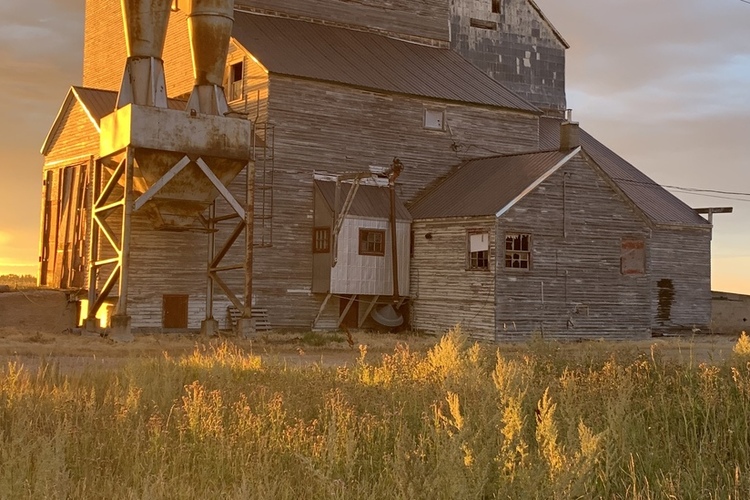Jul 18, 2023 By Isaac Farrell, Summer Researcher 2023 Strong personal place attachments to former local hotspots. Shared senses of settler heritage and rural community histories. Friendships and camaraderie developed between farmers and agents through countless interactions in and around the local elevator(s). Memories of childhood and of people and places that are now long gone. These are but a handful of the many reasons why a select few crib-style wooden grain elevators continue to be maintained across Saskatchewan, such as those that house Hepburn's Museum of Wheat and Val Marie's Municipal Heritage Elevator. However, the deeply personal nature of these reasons is also at least partially why the number of maintained grain elevators in Saskatchewan continues to decline at an accelerating rate. The number peaked in the 1950s with over 3,000 in the province, and as recently as the year 2000 there were well over 600 left standing. That number hovers around 400 as of 2023, with the number of well-maintained elevators likely well under 100. With each passing year, the number of people with personal connections to these "sentinels" of rural identity shrinks, and with them, the number of people willing to dedicate their time and resources to maintaining them gets smaller and smaller. Even in rural communities, younger people simply do not have memories of the childhood haircuts or the card games that occurred on the elevator driveway during downtime, or the childhood races to the top of the elevator to get an unrivalled view of the countryside or the banter shared between farmers waiting in line for their turn at the weigh scale. They likely never delivered grain to a wooden elevator or had close relatives work at one. Aside from the high economic costs associated with elevator maintenance or restoration, this lack of personal connection and shared experience is perhaps the greatest challenge to elevator conservation moving forward. That hasn't stopped elevators from featuring heavily in Saskatchewan's modern iconography. They graced the cover of a recent book on Canadian architecture, written by authors from the UK. They feature prominently on the background of beer cans made by several Saskatchewan breweries, including Pile of Bones, Rebellion, and Great Western, while Last Mountain Distillery even shapes some of their bottles in a grain elevator's outline. A regional politician recently used a picture of themselves standing in front of a grain elevator to emphasize their agricultural roots, while SaskTel is currently running a promotion on social media that features an elevator while asserting that it is investing "across the province to keep connecting you to what matters most." Travel across the province, and chances are high that you will still come across elevators on welcome signs to communities such as Balcarres, Dysart, or Holdfast, and in the town logos of places like Hepburn. In some cases, images of local elevators remain important to these places even when the grain elevator itself is long gone. This juxtaposition has been at the centre of my research so far. Do grain elevators still matter after they have lost their economic value? If not, why do they remain so prominent in Saskatchewan's identity? If so, what can and should we do with them? How much is their symbolic importance worth, and how much are we willing to invest in preserving them? Has the meaning of elevators changed over time, and will elevator imagery remain a significant part of Saskatchewan's identity even as they continue to decline in number? If not, what does this tell us about Saskatchewan's heritage, and what will we have lost in the process? That is not to say that the future of grain elevators has to be bleak. Dozens of privately owned elevators continue to operate across the province, with beautifully restored standouts including those in Craik, Harris, Simpson, and Watrous. Elevators in communities such as Tessier and Val Marie have been restored within the last decade, with the latter well on its way to eventually becoming a museum. Advertisements adorn the elevator at Chamberlain, suggesting one of the many alternative functions they could serve in the future. The elevator at Hepburn's Museum of Wheat faces several challenges, but a dedicated and inspiring volunteer group has kept it running for nearly three decades. However, it does mean that, as a province, we need to decide if they are worth keeping around, and we do not have much time to make a decision. If we wait too long, there won’t be many left to save.Reflections on Wooden Grain Elevators

